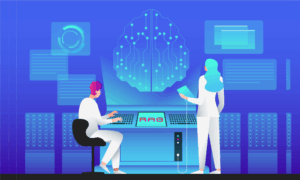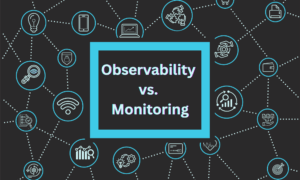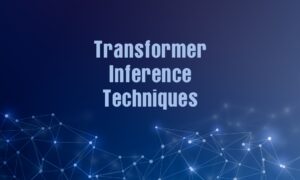Host: Hello everyone, welcome back to another episode of ExtraMile by HiTechNectar, an interview series that bridges the gap between industry leaders and enthusiasts. I am your host Sudakshina, and we are here to discuss the latest innovations, tech trends, marketing practices, expert insights, and a lot more. Today we are excited to have Shashi Nair, Head of Channel at Cyware, a company that helps businesses and governments defend against cyber threats through advanced threat intelligence and automated security solutions.
The Cyware platform allows organizations to identify threats, understand them better, and respond to cyber risks faster in an effective way. Shashi has spent years building partnerships in cybersecurity, from startups to major players like RSA and Kaspersky. Today we will explore his journey, the company’s unique approach towards partnerships, and about the company’s future in cybersecurity and collaboration.
Welcome Shashi, it’s great to have you with us today. How are you doing?
Shashi: I am doing good Sudakshina, how are you? Thank you for having me.
Host: I am doing great Shashi, thank you for asking. So, your career spans startups to giants like RSA and Kaspersky. What drew you to cybersecurity partnerships, and how does your diverse experience shape Cyware’s channel strategy today?
Shashi: Sure, so security is where the action is, right? Don’t get me wrong, each domain in the security space is extremely important. You would not have the technological advancements or the advancement that society is going through today without rapid proliferation of mobile platforms, mobile apps, networking, wireless, cloud, what have you, right?
However, what I feel is that security is the layer that kind of protects each of those domains individually and collectively, right? So that’s one of the reasons why I was always very attracted to the cybersecurity space. And let’s face it, I mean, I’m a sales guy, so at the end of the day, you know, it’s a very dynamic domain, which means there’s constant evolution, which means as a seller I’m never bored, there’s always something new to talk about, there’s always a new challenge to tackle and there’s a lot of money to be made in the cybersecurity sales space.
Host: Perfect. So, you spearheaded Cyware’s global partner program in 2023. What gap did you see in the market and how does this program uniquely equip partners compared to competitors?
Shashi: Yeah, so when we sat down in early 2022 to build out our channel strategy, you know, our global partner program, we affectionately call it Cyware One because the whole idea is to unify our channel ecosystem through the Cyware modules and our program, right? One of the things we noticed is that the intelligence base is very unique, right? While cyber threat intelligence is one of the most important areas within security operations, it is also an area where clients don’t always have priority spending, right?
So oftentimes it’s not a budgeted project. The sales cycles are also very long and there are many bumps in the process. So we wanted to, right off the bat, we wanted to recognize that challenge on our partner’s behalf, right?
So we wanted to make sure that we’re building a global program that rewards our partner community by removing tiers. I don’t think tiers are unnecessary. There are certain use cases where tiered channel model makes sense.
It does not make sense when you have a large sales cycle in my opinion, or a long sales cycle. We also wanted to remove multiple layers within the quote to order process. And also we wanted to ensure that our partners were protected throughout the length of the sales cycle.
Now, again, in our specific segment, the sales cycle can vary based on what the client is looking to accomplish, right? So we just wanted to make sure that, you know, it was a customizable program and there wasn’t a one size fits all approach. Our competitors, we realized on the other hand, were still relying on outdated channel methodologies, outdated partner program, you know, and tiered methodologies, right?
So that was one of the reasons why, again, CyberOne has, you know, now three years in a row, we have been awarded the CRN’s five star rating for channel program.
Host: Amazing. With experience at RSA during its best years in cybersecurity, what key lessons from RSA partners ecosystem did you take with you to Cyware? And how did you apply those strategies or tactics to the current threat landscape?
Shashi: My experience at RSA was very special because that was the first time I actually pivoted from working at, you know, for a reseller where I was able to sell technology solutions under every domain to moving to a, you know, cybersecurity focused sales model, right? Where all I was able to sell was cybersecurity. So it was a very special moment because I was able to learn a lot more about cybersecurity as a student of the industry versus when I was working for a reseller where I was able to sell every technology under the sun.
The other thing I also learned is that technology sales, within the technology sales, you have multiple ways of approaching the go-to market motions and the channel go-to market motions for cybersecurity is not similar to how you would approach that when you’re dealing with, let’s say, a networking domain or a wireless domain or a mobile domain or a data center domain, right? So I learned that there are very special partners and there is a very special sales motion that gets applied when you are promoting cybersecurity solutions in the market, right? So that was the first lesson that I learned, is that I have to be very specific in my approach about who I partner with.
Just like in sales, we talk about an ideal customer profile. You know, I believe in something called ideal partner profile, right? So a lot of people use this term called spray and pray.
I know it’s a cliche, but I genuinely feel that that’s a term that definitely applies in case of cybersecurity channel go-to market where I don’t think the spray and pray approach works. Not every partner that you sign up will be able to sell your product, let alone even position them correctly, right? So you have to really do your homework.
You have to really study the market, create a partner matrix, understand which partners make sense. And even after all that work, you would oftentimes realize that, you know, the 80-20 rule applies, right? 80% of your business would still come from 20% of that partner list.
Host: Brilliant insights. Those timeless lessons really shine through in cyber’s approach. Moving on.
At RSA, flashy demos tend to often dominate conversations. How do you help partners translate confidence hype into real world situations? Would you like to share an example where an RSA connection led to a concrete cyber partnership win?
Shashi: So I don’t think there’s anything wrong with flashy demos, right? And I’m not joking. I’m serious.
Like, you know, sometimes when you’re, if you’ve been to these conferences, you know, that are week long, you realize that walking the long floors can get very monotonous, very tedious. And oftentimes you hear the same marketing rah-rah-rah from a lot of people, right? So once in a while, it’s okay to have a visual impact, you know, that kind of stops you in your tracks where you see like a very flashy demo.
What makes it, I would say, useless is if that flashy demo is, again, just a lot of marketing rah-rah-rah and not really giving you any substance, right? Now, moving back to our booth, right? When we were at RSA this year, we had two large displays that we dedicated to our solution demonstration.
And what was fascinating for me and our team was to witness that the queue leading to both those displays were very healthy throughout the duration of the conference, right? People were queuing up to watch our demos. And that was not a happenstance, right?
That was not coincidence. It happened because we actually showcased what our clients, what our users would be able to do when they log into the platform. We had real life examples, real life use cases, very customized demo, you know, modules that we presented, which actually, you know, really got us a lot of traffic and a lot of follow-up action items, right?
So I think flashy demos are okay, as long as you are able to back those up with actual substance. Fantastic.
Host: The company’s latest TIP release with team Cymru focuses on actionable threat data. How do you translate these technical capabilities into tangible wins for partners and their clients?
Shashi: Yeah, so any intelligence is only as good as how it is put to use, right? And that applies to cyber threat intelligence as well. What I mean by that is, you know, like you can collect telemetry, you know, petabytes of data, but if you’re not able to operationalize it, at that point, it’s just a, you know, check the box type scenario where you’re really not able to do much with all that information.
And that’s where I think our solid partnership with Team Cymru comes in. You know, for those that don’t know, Team Cymru is, in my opinion, the leader in deep real-time, you know, internet data, internet telemetry, and feeds, right? So when SOC teams leverage the Team Cymru data that is flowing through cyber’s unified threat intelligence platform, they’re able to truly operationalize threat intelligence, right?
They’re able to prioritize risk. They’re able to accelerate threat investigation detection and response time, right? That is what it’s really all about, right?
So if you’re not able to do those things, and if you’re not able to mitigate the most complex threats, all that data that you’re collecting is really of no use. So at a high level, you know, Cyware’s automated workflows ingest Team Cymru’s real-time threat intelligence feeds, and then we’re able to provide context that our analysts, our user analysts, our clients, their teams need to gain deep visibility into, you know, let’s say a botnet activity, right? Or external threat actors, their malicious behavior.
This data is retained within our Cyware platform, so it allows and enables much more thorough and precise security investigations.
Host: That really sounds excellent for partners and their customers as well. Cyware is betting big on AI for threat detection. From a partner’s lens, how does this simplify security operations without overwhelming lean teams?
Shashi: I have a lot of respect for our partners, right? I wouldn’t be in my seat had it not been for them and their support. What I love about our partners is that they are committed to helping their clients achieve desired business outcomes.
They are also tasked to maintain focus on financial and operational health for these clients, right? So what Cyware is doing is we are dedicated to helping these partners meet their commitments to their clients. For us, AI is not just a marketing buzzword.
You know, we have been leveraging AI since the inception of our company. Our products are purpose-built for SOC optimization and operationalizing threat intelligence, and AI has been an integral part of that journey, right? We put AI to use at pretty much every stage of our R&D.
So, to give you an example, imagine a scenario where an analyst receives information about compromised credentials. Now, typically, once you receive information, once you receive that package about compromised credentials, oftentimes the analyst is now manually sifting through that data, figuring out, correlating that data, understanding how that impacts their organization, you know, connecting with different teams within the security organization, whether it’s the active directory management team, whether it’s the firewall team, whether it’s, you know, any other, you know, threat hunting team, a vulnerability management team, you’re working with all of them together. It’s a manual, tedious process that could take hours, if not days, depending on the size of the package, depending on the size of the information that you’re sifting through.
Now, that’s where AI comes in, right? Our AI agent is able to do all of these tasks in a matter of minutes with equal efficiency and equal results, right? The quality of the result is not compromised under any circumstance, right?
So, that’s the power of AI that we bring to the table, where a cybersecurity analyst who is, you know, now they’re able to, like, focus on what’s really important to the organization and do other important tasks instead of doing a lot of manual workflows.
Host: Very well said. So, having enabled 21 plus global partners, what’s the number one challenge partners face today, and how are you addressing it?
Shashi: Yeah, I mean, I don’t think there is a number one challenge that has been a constant, right? Each year brings different set of challenges. This year has been interesting because not only are we seeing our clients and partners face geopolitical challenges, we’re also seeing them face economical challenges.
We’re also seeing them face, you know, the proliferation of AI, right? Not a conference goes by, not a day goes by when you’re walking through the airport or you’re turning on radio or television or whatnot that you don’t see an advertisement specifically talking about how certain product helps, you know, helps with, you know, like certain products and their AI helps customers, right? So, it’s very hard for clients to sift through the noise.
I look at it as like playing the game of Where’s Waldo, right? You really need to remove all the noise, the crowd, and you really need to have a product that stands out, right? And that’s the biggest challenge that our partners are facing.
So, one of the things that we did is we, you know, from the beginning of our channel program, we have relied heavily on our partners’ input to make our products better, right? So, our partners are part of our advisory teams. They are constantly in communication with us, our product engineering team, our sellers, our customer success teams, all of them are on regular cadence calls with our partners along with our clients.
So, oftentimes, we know what the real-life requirements are for our partners and clients. Our products have those capabilities built in. So, it’s easy for our partner sellers to go to their clients and say, hey, there’s a lot of noise, but take a look at this solution, take a look at this company, because we have been witnessing their journey from the inception.
This is not a marketing gimmick. They really have a product that delivers, right? So, I think that in today’s environment, this year, our partners’ biggest challenge is helping their clients remove noise from the market, the AI noise from the market.
And I think, you know, having this strategy has really helped us stand out.
Host: Those were really great insights, Shashi, especially the underrated skills and partnerships. So true. So, with that, we end our conversation.
Thank you so much, Shashi, for sharing your expertise and knowledge with us today. Your perspectives on partnerships, AI, and cyber’s innovative mindset were truly valuable. Thank you.
Shashi: Appreciate it, Sudakshina. Thank you for your time.
Sudakshina: Thank you so much. Thank you, everyone, for joining us today. I’m your host, Sudakshina, signing off.
See you in the next episode of ExtraMile by HiTechNectar, with our next extraordinary leader on board, sharing their thoughts and knowledge. Stay tuned.
Explore Our Other Insightful Interviews:





















